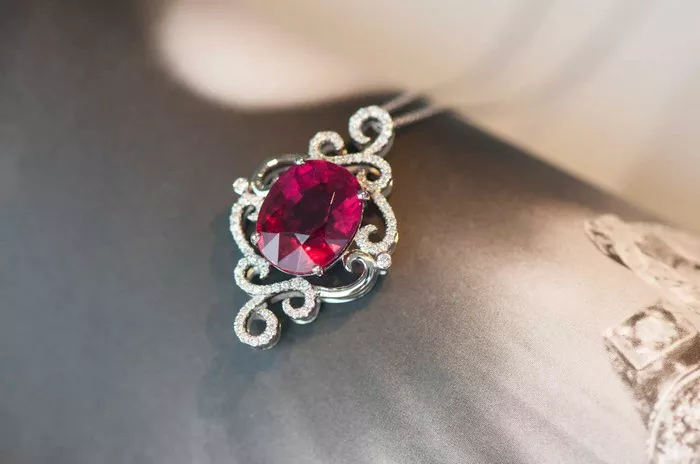Light blue tourmaline, also known as indicolite, is a rare and beautiful variety of the tourmaline gemstone. This gemstone is renowned for its calming and soothing blue hues, which evoke a sense of tranquility and peace. Tourmaline, in general, is a highly versatile gemstone known for its wide range of colors, from deep reds to vibrant greens, and everything in between. However, light blue tourmaline stands out due to its unique color and the spiritual and healing properties associated with it. This article will provide a detailed introduction to light blue tourmaline, including its characteristics, sources, uses, and the various beliefs and legends surrounding it.
Characteristics of Light Blue Tourmaline
Light blue tourmaline is a member of the tourmaline family, which is a complex group of boron silicate minerals. These minerals are characterized by their crystal structure and the presence of various elements such as aluminum, magnesium, sodium, lithium, and iron. The color of tourmaline is determined by the specific elements present and their concentrations within the mineral. Light blue tourmaline gets its color from trace amounts of iron and other elements that absorb specific wavelengths of light, allowing the blue hues to shine through.
This gemstone exhibits a phenomenon known as dichroism, which means that it displays different colors depending on the angle of view. When viewed from certain angles, light blue tourmaline may appear lighter or darker, and sometimes even display hints of other colors such as pink or green. This unique property adds to the gemstone’s allure and makes each piece truly unique.
Light blue tourmaline is typically found in shades ranging from pale to dark blue, with some pieces even exhibiting a tinge of turquoise. The gemstone’s hardness ranges from 7 to 7.5 on the Mohs scale, making it suitable for jewelry that can withstand daily wear and tear. Its durability and beautiful color make it a popular choice for rings, pendants, earrings, and other pieces of jewelry.
Sources of Light Blue Tourmaline
Light blue tourmaline is found in various locations around the world, including the United States, Kenya, Nigeria, Afghanistan, Sri Lanka, and Brazil. Each source produces tourmaline with slightly different characteristics, such as color intensity, clarity, and size.
In the United States, light blue tourmaline is primarily mined in California, where it is found in pegmatite rocks. The gemstone from this region is known for its vibrant blue hues and excellent clarity. Kenyan and Nigerian tourmaline, on the other hand, tends to be darker and more saturated in color. Afghanistan and Sri Lanka produce tourmaline with a unique combination of blue and green hues, often sold as bi-color or tri-color pieces. Brazilian tourmaline is renowned for its large sizes and vibrant colors, making it a favorite among gem collectors and jewelers.
Uses of Light Blue Tourmaline
Due to its beautiful color and durability, light blue tourmaline is widely used in jewelry making. It is often set in gold, silver, or platinum to create stunning rings, earrings, pendants, and bracelets. The gemstone’s calming blue hues make it a perfect choice for engagement rings and other pieces of jewelry meant to symbolize love and commitment.
Light blue tourmaline is also used in healing crystals and spiritual practices. Many people believe that this gemstone has the power to promote emotional healing, reduce stress, and bring peace and tranquility to the wearer’s life. It is often recommended for those seeking to overcome past hurts, release emotional bonds, and explore a stronger spiritual connection.
In addition to its use in jewelry and healing crystals, light blue tourmaline is also valued for its rarity and beauty. Collectors often seek out unique pieces with exceptional color and clarity, while gemologists study its physical and chemical properties to better understand the formation and evolution of this fascinating gemstone.
Beliefs and Legends Surrounding Light Blue Tourmaline
Light blue tourmaline has been revered for centuries due to its unique color and the beliefs and legends associated with it. According to an old Egyptian legend, tourmaline was created when the rainbow touched the Earth, giving the gemstone all the colors of the rainbow. This legend explains why tourmaline is often referred to as the “gemstone of the rainbow.”
In ancient times, tourmaline was believed to have magical powers that could protect its wearer from harm and bring good luck. It was also thought to be a gemstone of love and friendship, capable of rendering these relationships firm and long-lasting. These beliefs have persisted throughout the ages, making tourmaline a popular choice for engagement rings and other pieces of jewelry meant to symbolize love and commitment.
Today, light blue tourmaline is still valued for its spiritual and healing properties. Many people believe that this gemstone can help identify the underlying causes of illnesses and diseases, promote emotional healing, and bring peace and tranquility to the wearer’s life. It is often recommended for those seeking to overcome past hurts, release emotional bonds, and explore a stronger spiritual connection.
Light blue tourmaline is also believed to be a crystal of the throat and third eye chakras, which are associated with communication, intuition, and spiritual awareness. By wearing or meditating with this gemstone, many people believe they can strengthen their connection to their higher levels of intuition, amplify their gifts of clairaudience, clairvoyance, and clairsentience, and unlock their gift of prophecy and spirit communication.
Conclusion
Light blue tourmaline is a rare and beautiful gemstone that has captivated people for centuries due to its unique color and the beliefs and legends associated with it. This gemstone is renowned for its calming and soothing blue hues, which evoke a sense of tranquility and peace. Its durability and versatility make it a popular choice for jewelry, while its spiritual and healing properties make it a favorite among those seeking emotional and spiritual growth.
Related topic:
- What Are the Healing Properties of Black Tourmaline
- Does Black Tourmaline Fade in the Sun
- The Charm and Application of Pink Tourmaline in Jewelry Design


